As written in the introduction section of our project, engineering is seen as a very exclusive and rigid field; therefore, our proposed solution is utilizing art as a medium to help alleviate this. The first section of our discussion focuses on the subsets of an overall social context for this problem through three lenses: educational, psychological, and cultural. We seek to improved the lives of students and staff inside Acopian Engineering Center, to foster true interdisciplinary action, and change a culture surrounding Lafayette Engineering that is not healthy to those inside or outside. To this end, we consider how our project options/proposals affect the people working inside Acopian Engineering Center, the people outside of the center looking in, and the campus overall. To better analyze these effects, we use the educational context, psychological context and cultural context that provide the foundations for this work.
Educational Context
The educational context giving shape to this project encompasses the effects art has upon learning. This includes factors such as coursework, ambiance, and integration into classroom and learning space. As the building stands, Acopian is similar in design to multiple other buildings on campus, a product of a time and style that gave the campus its signature brick look. Hugel, Acopian, Kunkle, and Watson all share a similar design pattern, and as such the four buildings in and around Anderson Courtyard blend together into one long stretch of academic space.
Our study included a series of facilitated discussions and surveys with current students and professors in engineering, art, and psychology, which we discuss at greater length below. In total we interviewed thirteen students and two professors. During a group interview, three engineering and art double major students, referred to as Student 1, Student 2, and Student 3 pointed out the viability and enjoyment of spaces such as Acopian and Kunkle for studying and learning versus newer spaces. . To them, Acopian and Kunkle, as well as similar buildings, had limited spaces where there was a significant openness towards the outside world. Speaking specifically of Acopian, Student 1 had this to say: “I’m going to say something very cliche. But more windows. I really don’t like the bottom floors. At least floor two there’s tiny little windows at the top of the thing and you’re like, “oh I can maybe see someone’s feet” but that’s about it.”
Student 1 made another valid point, one echoed by his associates during that interview. When asked about Lafayette’s engineering culture and how it might be changed, Student 1 made reference to his feelings regarding the “hands-on” aspect of engineering and art curriculums. He said the following:
I also feel like in art there’s a lot more forced hands on experience. So in engineering you can get that hands on experience by yourself if you like talk to professors and you’re like, “hey I want to do research” or like go to the ASB meetings but it’s not like automatic; you have to seek it out. Versus art classes, like, you have to take materials and methods; you have to take a drawing class or something. Like there’s ME 210 but that’s it; it doesn’t go anywhere from there. There’s not as much forced hands on experience.
In recent years, there has been a significant push towards changing education curriculums of STEM (Science Technology Engineering and Mathematics) to include an integrated focus on the arts. In her discussion of the rising trend of STEAM education, Michelle H. Land argues a number of reasons why art has a critical place among the rest of STEM. One of her major points focuses on how students learn. In the wake of the No Child Left Behind Act, Land argues, teachers taught to the curriculum, instilling right and wrong answers without a critical emphasis on problem solving, creative solutions, or complex and roundabout thinking (Land, 2013). Early teaching of this “right/wrong” mentality rears its head within Acopian. As much of students’ early engineering education revolves around definitive problems and equations, the mentality is perpetuated. Student 1’s point regarding ME 210 being the sole early hands on course has clout here; it is there students begin to grasp creative thinking to problems, where no one solution is absolute.
Multiple authors and researchers echo these sentiments. Jessica Lahey wrote of her father’s teachings, instilling the lessons that creativity and know-how must work in tandem to create, for The Atlantic in 2014 (Lahey, 2014). California science teacher Christine Mytko adopted “Maker Mondays” with her students, encouraging artistic creativity applied to problem solving and class science activities. On her website, Mytko also posted articles and presentations discussing the addition of more current and hands on technologies to better link the arts and the sciences (Mytko, 2014). Better integration of arts and interdisciplinary space into Acopian alleviates pressure on students and educators to perform and find the “right solution.” Exterior art adorning Acopian is the first step of many to tackling this problem. In our primary design, a mural painted on segmented panels, there are engineering and construction questions students could analyze for education purposes. The art provides an opening to which conversation and discussion can start. It brings the arts and interdisciplinary action into the classroom in such a way that has been lacking in Acopian, to the detriment of those inside.
Psychological Context
The psychological context surrounding this project mainly addresses the perception that engineering is a discipline that is rigid, exclusive, and strict. In addition to engineering already having these perceptions, The Acopian Engineering Center physically reflects these downfalls through its aesthetics and physical layout or structure of the building. In other words, the perception of engineering as a rigid and exclusive fields has not changed and we believe that the aesthetics of Acopian plays a role by reinforcing this rigidity and exclusivity through its dullness or darkness and shortage of communal spaces. Currently, Acopian does not serve as a building that promotes the colleges mission of being interdisciplinary and collaborative. “Clear links have been drawn between poor quality school buildings and classrooms and poor outcomes for learners” (Hall et al., 2007). It does not have many aspects of the building that promotes self care, stress relief, or the welcoming of non-engineering Lafayette students. Therefore, we are interested in trying to find a way to change this using art as a medium.
According to Scott Hummel, “Acopian Engineering Center was built for functionality, not to be the most aesthetically pleasing building on this campus” (Blake, Hansen-Kemp, & Millar, 2017). Therefore, it is probable that many key features of a building that help it serve as a positive learning environment were not a priority when this building was designed. Some vital components of a positive learning environment include greenery, windows, noise, ventilation, lighting, and open space. However, for this project, we will mainly focus on greenery, windows, lighting, and open spaces, since noise and ventilation are two aspects that would be difficult to enhance through an art medium.
Enhancing these aspects can be vital to creating a positive learning environment (Higgins et al.). From our student panelists, the engineering students collectively came up with a variety of different key flaws that they believe either inhibit their learning, make them not want to do work in Acopian, or just make it seem more dreadful in Acopian. First, lighting affects mood and attitude which can also affect and influence how a person performs (Hall et al., 2009). These students believed that poor, dull lighting and a lack of natural lighting were two aspects that they would like to see improved or changed (Students 6, Student 7, Student 8, & Student 9, 2018). For example, a civil engineering student stated that, “The buildings on campus that seem most inviting to me have lots of windows/ natural lighting and many open spaces. Most of the spaces are very closed off or only have windows that are awkwardly out to the hallway instead of outside.” (Student 6, 2018). Having students observe these flaws and see that it creates a more unwelcoming environment compared to other spaces on campus can create a disconnection between the ability to do their work and the effectiveness of their work.
Lastly, in Acopian, there is a lack of windows and furthermore, the view from the few windows that the building does have is not an interesting one nor does it show a lot of greenery. Unfortunately, the lack of windows directly equates with a lack of natural light being allowed to enter into the classrooms. For example, there is a huge glass staircase in the rear facing side of Acopian, yet this glass staircase provides a view to a parking lot. In addition, a student panelist complained that some of the windows in the labs are facing the internal parts of Acopian; therefore, it displays the hallway or another room (Student 6, 2018). According to student panelists, natural sunlight is an aspect of a studying area that they all collectively feel is something that they look for when trying to find a study space (Student 6, Student 7, & Student 8, 2018). In addition to not providing natural lighting, the absence of windows also prevents students from having a view of greenery, flowers, nature, and the Anderson Courtyard. Leather et al. (1998) concluded that having a window view that displayed natural, rural elements led to its participants reporting that their emotional stress levels decreased and therefore, they reported having less of a desire to quit their jobs. Similarly to this study, Wells (2000) concluded that her participants had higher cognitive functioning when they had nature in the direct view from their windows. These two studies show the positive effect that nature can have on a person when trying to accomplish cognitive or stress-inducing tasks; therefore, mimicking or creating the accessibility to these aspects can be ideal and beneficial for a student’s mental health and educational potential.
In addition to lighting, student panelists believed that the color scheme of Acopian was not a positive one. Collectively, the panelists described Acopian as being “dull”, “dark”, “bland”, “dreadful”, and having a “lack of color.” Additionally, they believed that adding some colorful, form of art to either the interior or exterior of the building would improve their mood while studying in Acopian. The Effects of Color on the Moods of College Students, analyzed responses from 499 college students regarding the color schemes of buildings, their favorite colors, demographics and more. The following two pie charts are two of the graphical displays resulting from this study. They are adjacent to each other to be able to see the differences between how many students disliked gray and brown versus how many chose the two as one of their favorite colors. This difference is visible by comparing the slice on the left with the slice on the right. The chart on the left is a graphical representation of the respondent’s least favorite colors and the chart on the right is a graphical representation of the respondent’s favorite colors, as shown below:
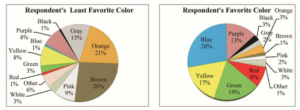
Figure 1: Statistical information about respondents (Kurt and Osueke, 2014)
From this study, 26%, or about 130 students, listed brown as their least favorite color; whereas, only 1%, or about 5 students, listed it as their favorite color. In addition, 13%, or about 65 students listed gray as their least favorite color; whereas, only 2%, or about 10 students, listed it as their favorite color. In other words, brown and gray are two colors that are seen as the least favorite to a total of 39% of students that participated in this study. Unfortunately, Acopian’s classrooms consists of a lot of gray and brown color schemes with the obvious overlooking of their white walls, a seemingly neutral color that people neither did not like nor favoritized. This study concluded that “The need to know the effects of colors on moods of individuals is very essential for architects. In most cases, the use of appropriate and/or correct colors would increase the functionality of that space.” (Kurt & Osueke, 2014, p. 11). Therefore, adding appropriate color to Acopian would have an effect on the mood of students in those spaces and their efficiency.
For example, compare the differences between a computer lab from Skillman Library, pictured left, versus one from Acopian, pictured right. The lights are brighter. Although it is difficult to see here, there are three larger tables in the middle for people to do work or sit together. Also, there are four brightly colored paintings that are on the anterior wall of the room; where as, the walls of this computer lab in Acopian are strictly white.
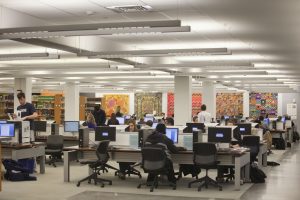
Figure 2: Skillman Library (Lafayette College “Skillman Library,” 2010)
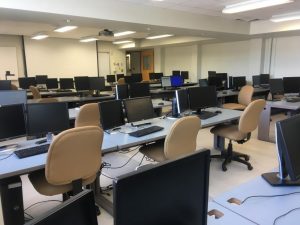
Figure 3: Acopian Engineering Center Computer Lab (Lafayette College “Acopian Engineering Center,” 2018)
Even though lighting and color are just two of many things that students believed should be changed about the environment and atmosphere of Acopian, they were the two that more students seemed to notice from conducting our panels and doing outside research. We believe that the lack of these two things combined takes a significant toll on students psychologically, mentally, and emotionally. Despite this, these two can be easily incorporated in an art piece on the external wall of Acopian.
Cultural Context
Lafayette College prides itself in being one of the few liberal arts college with a very strong engineering program. It is a factor of Lafayette that sets it apart from many other colleges. This unique feature allows Lafayette to promote collaboration between students and faculty and broadcast how interdisciplinary the school is. Lafayette’s mission statement says, “[Lafayette] will continue to work toward greater integration of A.B. and B.S. programs so that all students may be the beneficiaries not only of specialized inquiry but of connected, interdisciplinary inquiry as well”; however, this is not always the case as seen when analyzing the culture surrounding engineering at Lafayette. For example, Figure 2 below, shows an image of a group of students congregating to do work without any comfortable places to sit or do their work except tables.
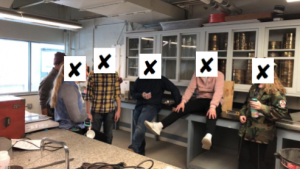
Figure 4: Students congregating to do work. Taken by an engineering student (2017).
Currently, the lay out of Acopian’s main lecture classrooms are very similar to engineering classrooms from the mid 1900s. For example, Figure 5 on the left is a picture taken from one of The Pennsylvania State University’s mechanical engineering classrooms; whereas, the Figure 6 on the right displays what a typical Acopian lecture classroom looks like today.
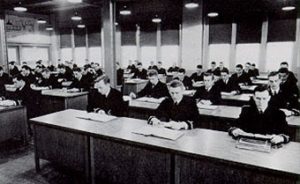
Figure 5: Mechanical Engineering at the Pennsylvania State University (The Pennsylvania State University, 2018)
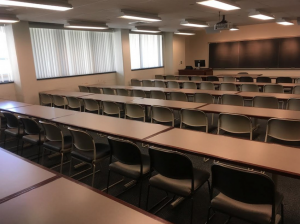
Figure 6: Acopian Engineering Center Classroom (Lafayette College “Acopian Engineering Center,” 2018)
Unfortunately, these two classrooms are very similar yet one major difference is that Figure 4 is from a time where engineering was a field even more exclusive than it is today due to more people having the ability to receive a higher education. If our classrooms still mimic those of that time, what aspects of them are expected to contribute to the college’s goal, as stated in its Innovation News Website, of having “transformational ideas comes from our classrooms, labs, art and music studios, and alumni community” if the classrooms themselves do not represent values of inclusion and innovation.
To gain a greater understanding of how non-Engineering Studies students feel about the culture surrounding engineering on campus, we conducted student panels. The panelists consisted of students from a variety of different majors outside of engineering as well as all four engineering disciplines. The panelists ranged from freshmen to seniors, as well.
Collectively, students described engineering as an elite and prestigious field that has a very good reputation externally; however, there is a lot of stress and difficulties associated with engineering. A civil engineering student stated that,
The engineering culture at Lafayette seems to be one where engineers take pride in their engineering degree and in the prestige of our engineering program. Another, less healthy, aspect of the culture is that all the engineers seem to be trying to act like they have the hardest life. Everybody is comparing their workload, exam difficulty, and how many hours a week they spend in Acopian to try to make it seem like they have to work the hardest in their major.
This citation suggests that there is a sense of competitiveness within engineering culture that might serve as an unhealthy disadvantage to engineering students.
In addition, a chemical engineering student stated that “the engineering culture is very unified, perhaps even to the extent of not including other majors” (Student 8, 2018). Unfortunately this belief of exclusiveness and unwelcoming attitudes towards non-engineers is also recognized by non-engineers as well. Two non-engineering students stated that they believed that being in Acopian is “intimidating” or that they feel that the “there is a school attitude that [favors] engineers”(Student 11, Student 12 & Student 13, 2018). In other words, they feel that they do not belong and should not work in Acopian despite it being the only academic building that is opened 24/7. To go along with these feelings, engineering students believed that having a more inviting Acopian would definitely create a more positive environment.
The culture surrounding Acopian can eventually take a huge toll on its students because the amount of long hours per week engineers spend in there. On average, upperclassmen engineering students stated that they do work in Acopian for over 20 hours a week at times. In addition to the long hours spent here, as previously stated, Acopian is the only building available to students, specifically engineering students, 24/7. Therefore, not only do students have to deal with the rigidity, exclusiveness, and strictness of the discipline on a daily basis but they also have to combat against the tiredness and fatigue that they encounter while being in this building for longer and later hours of the day.
The subsections of the social context: educational, psychological, and culture, that we described above are important to understand in order to recognize why implementing an art piece(s) to Acopian can have an effect on the Lafayette community. In other words, the social context was a way to understand why it is a problem that engineering is seen as a rigid and exclusive field.
To read more about the political context of our project, click here.